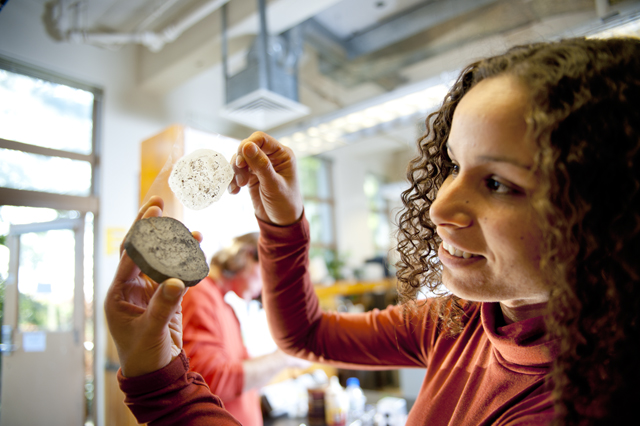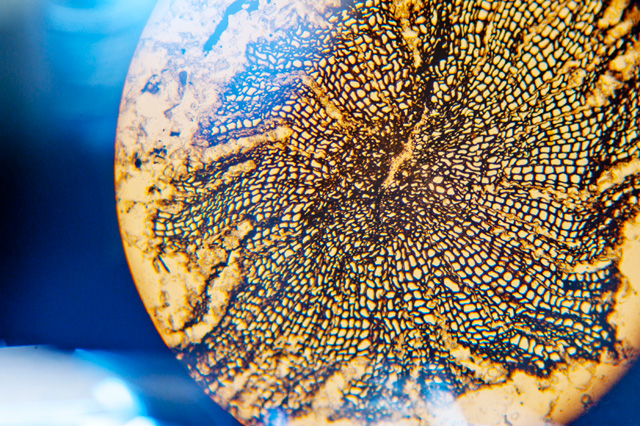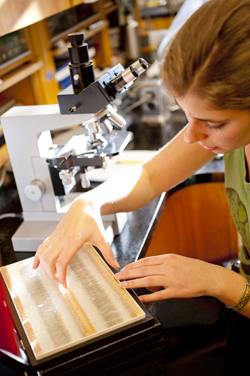
Whether they’re grinding down rocks, examining fossils through a microscope or looking in the sunlight at fossil cells recovered in a cellulose sheet, the group of students’ focus is to research and analyze ancient plants. “You’re unlocking what earth was like before we were here,” said junior Botany major Jon Lee. “It’s like understanding history.”
The University of Alberta, Canada, sent Tomescu 100 million-year old rocks from Vancouver Island, Canada, for the students to analyze fossil plants, which are preserved complete with their cellular tissues in the rocks. While investigating the samples, the students discovered a whole new family of plants. “Those rocks contain a lot of plant fossils of a lot of different types of moss,” Tomescu said. “The students are adding new species to plant fossil history.”
“I think it’s a really great opportunity as a freshman to do this research,” said Botany major, Alex Bippus.
The students are also exploring 400 million-year old fossils that were collected by Tomescu and students in Wyoming. Tomescu explained that the rocks date back to the time when the first vascular plants went through evolutionary radiation, meaning they were diversifying into many different types of plants. “They are the only plants of that age in western North America,” Tomescu said.

To study all of these fossils, students grind down a rock sample, giving it a smooth and glossy texture. They then take the smoothed surface of the rock and pour 0.5-percent concentration hydrochloric acid on it, which dissolves a thin layer of the rock and leaves the fossil sticking out. A film of cellulose paper is then placed on top the smooth layer with acetone, attaching itself to the fossils.
“You can find moss, wood pieces and shells in the fossils without having to break into the rock,” junior Botany major Christa Unger explained. “It’s really noninvasive and that’s probably my favorite part.”
The students then peel off the cellulose paper and examine it through a microscope to see the fossils in different sections. “We get to use these awesome microscopes and see this whole new set of specimens,” said senior Botany major and president of the Botany club, Laurel Hoffman.

She described Tomescu’s lab environment as a community where students are free to ask each other questions and help with each other’s research while using unique equipment. “Tomescu is providing an opportunity that most undergraduates don’t have access to in most California universities,” Hoffman said. She added that labs like this have been instrumental in qualifying her for admission to competitive graduate schools.
Hoffman is working with Tomescu to describe anatomically preserved “woody” plant fossils from New Brunswick, Canada, which came on loan from the Smithsonian Institution. “It’s the oldest evidence of woody-growth we’ve ever seen,” Hoffman said. She has been dissecting and examining the particular fossil for over a year. Her analysis has become a race with researchers in Europe who have found the same results. “It’s a race for publication,” Hoffman said.
After viewing the fossils through the microscopes, students label and sort the cellulose paper and store the samples in envelopes for further analysis.
“It’s really rewarding to see students learning hands-on techniques,” Tomescu said. “It’s sort of self-directed learning. They start searching for stuff because they become curious.”